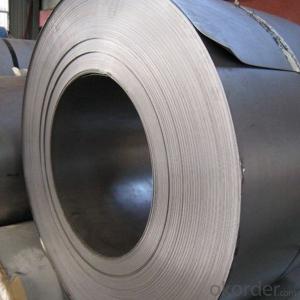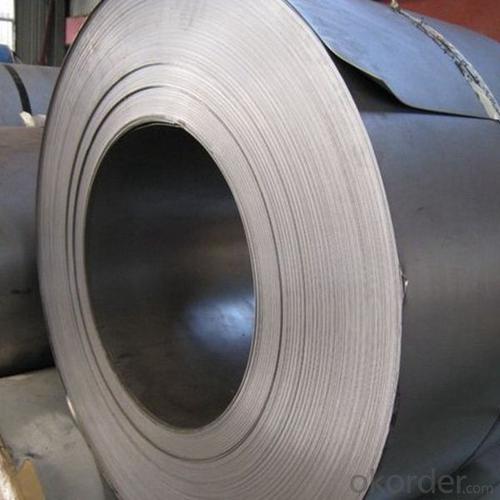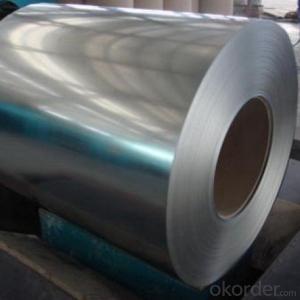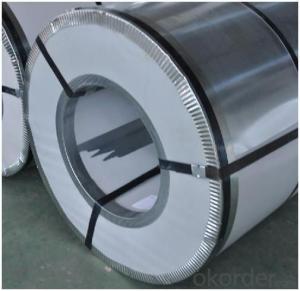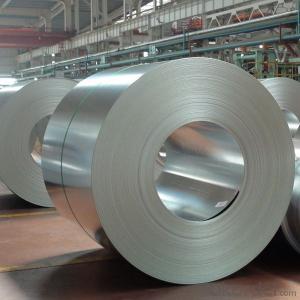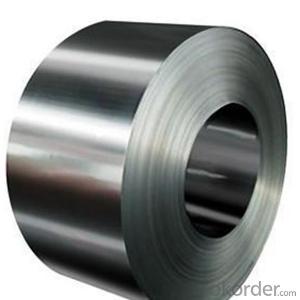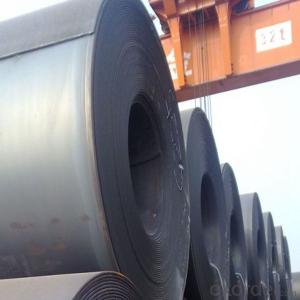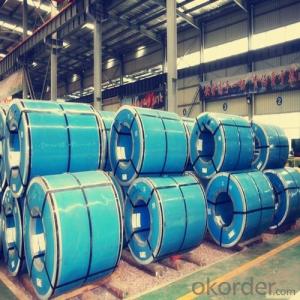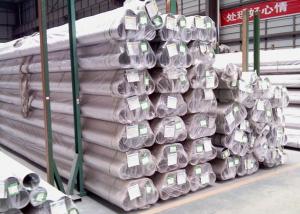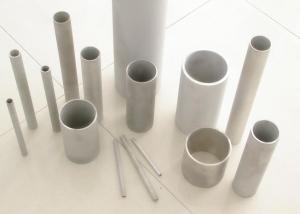Steel Stainless 304 Steel Coils NO.1 Finish, Made in China
- Loading Port:
- Tianjin
- Payment Terms:
- TT OR LC
- Min Order Qty:
- 28 m.t.
- Supply Capability:
- 25 m.t./month
OKorder Service Pledge
OKorder Financial Service
You Might Also Like
Specification
Products Description for Stainless Steel Coils/Sheets:
Product | stainless steel coils/plates/sheets | ||
Discharge Port | Any Port, China | ||
Size | Coils | Cold Rolled: | Thickness0.3-8mm,Width:280-2100mm |
Hot Rolled : | Thickness3-14mm,Width:650-2100mm | ||
Plates | Thickness2-80mm,Width:1500-3000mm | ||
Coil Weight | About 20 Tons | ||
Grade | 201,202,304/304L/304H,316/316L/316H,321/H,310S,409/L,430 etc. | ||
Technique | Hot Rolled/Cold Rolled | ||
Finish | 2B, BA, 2D, No1, No2, No4,NO.8,SB etc | ||
Edge | Mill Edge / Slitting Edge | ||
Package | In bundles, or as customer's requirement | ||
Place of Origin | Made in China | ||
MOQ | 20 Tons | ||
Specifications for Stainless Steel Coils/Sheets:
Grade | C ≤ | Si ≤ | Mn ≤ | P ≤ | S ≤ | Ni ≤ | Cr ≤ |
201 | 0.12 | 0.75 | 7.00 | 0.045 | 0.045 | 1.00-1.28 | 13.70-15.70 |
202 | 0.15 | 1.00 | 2.25 | 0.045 | 0.045 | 4.07-4.17 | 14.00-16.00 |
304 | 0.08 | 0.75 | 2.00 | 0.045 | 0.03 | 8.00-11.00 | 18.00-20.00 |
304L | 0.035 | 0.75 | 2.00 | 0.045 | 0.03 | 8.00-13.00 | 18.00-20.00 |
309 | 0.15 | 0.75 | 2.00 | 0.045 | 0.03 | 12.00-15.00 | 22.00-24.00 |
310S | 0.08 | 1.50 | 2.00 | 0.045 | 0.03 | 19.00-22.00 | 24.00-26.00 |
316 | 0.08 | 1.00 | 2.00 | 0.045 | 0.03 | 10.00-14.00 | 16.00-18.00 |
316L | 0.035 | 0.75 | 2.00 | 0.045 | 0.03 | 10.00-15.00 | 16.00-18.00 |
321 | 0.04-0.10 | 0.75 | 2.00 | 0.045 | 0.03 | 9.00-13.00 | 17.00-20.00 |
405 | 0.08 | 0.75 | 1.00 | 0.045 | 0.03 | 0.06 | 11.5-13.5 |
409 | 0.089 | 1.00 | 1.00 | 0.045 | 0.05 | 0.06 | 10.50-11.75 |
410 | 0.15 | 0.75 | 1.00 | 0.045 | 0.03 | 0.06 | 11.5-13.5 |
420 | 0.16-0.25 | 1.00 | 1.00 | 0.040 | 0.03 | 0.06 | 12.00-14.00 |
430 | 0.12 | 0.75 | 1.00 | 0.045 | 0.03 | 0.06 | 16.00-18.00 |
Features of Stainless Steel Coils
(1)Good ductility
(2)Good corrosion resistance
(3)Excellent abrasion resistance and fatigue strength
(4)Good weldability
(5)Oxidation resistant performance
(6)Excellent in high temperature
Our Service
1.High quanlity and reasonable price.
2.Customized on-demand.
3.Reasonable shipping and fast delivery.
4.Free sample.
Details for products:
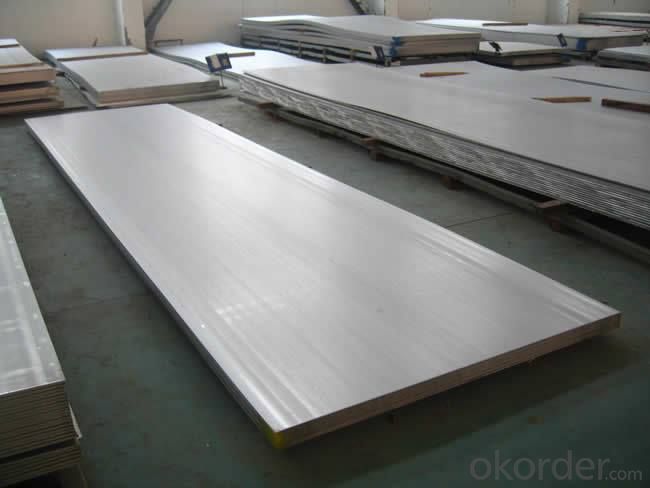
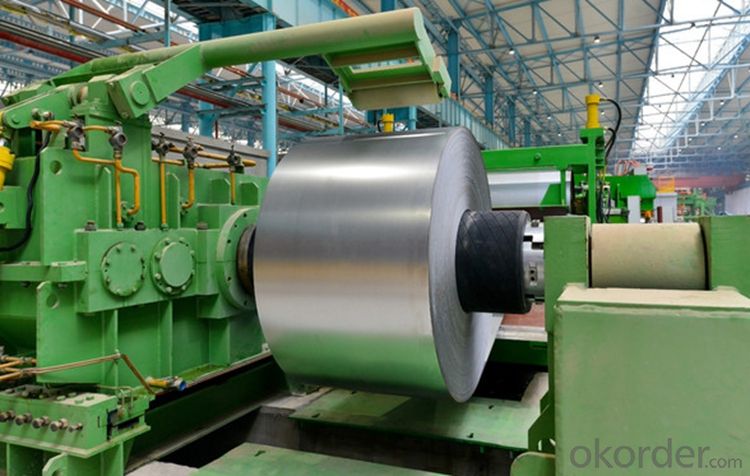
.
Application of Stainless Steel Coils
(1)Boiler heat exchanger,
(2)Chemical industries,
(3)Hardware fields,
(4)Construction material,
(5)Kitchen utensils,
(6)Building construction,
(7)Medical equipment,
(8)Chemical tank,
(9)Pipe etc
FAQ for Stainless Steel Coils/Sheets:
Q: How long is the delivery time?
A: Normally 30-40 days, but mostly according to the specific requirements or the quantity
Q: Could you send me sample?
A: We can supply you with the sample for free, but the delivery charges will be covered by customers
- Q: Can stainless steel sheets be used for elevator mirror panels?
- Yes, stainless steel sheets can be used for elevator mirror panels. Stainless steel is a durable and corrosion-resistant material that is commonly used in elevator design and construction. It is also highly reflective, making it an ideal choice for mirror panels. Stainless steel mirror panels not only provide a sleek and modern aesthetic to elevators but also offer excellent durability and ease of maintenance. Additionally, stainless steel can withstand the wear and tear of constant use, making it a reliable and long-lasting material for elevator mirror panels.
- Q: How do you remove stains or marks from stainless steel sheets?
- To effectively eliminate stains or marks from stainless steel sheets, follow these step-by-step instructions: 1. Begin by identifying the specific type of stain or mark present on the stainless steel sheet. Common examples include water spots, fingerprints, grease, or rust. 2. For general cleaning purposes, utilize a soft cloth or sponge soaked in warm water and mild dish soap. Gently wipe the stainless steel surface, ensuring to follow the grain to prevent scratching. Thoroughly rinse with clean water and dry using a soft cloth. 3. To tackle more stubborn stains or marks, create a paste by combining baking soda and water. Apply the paste to the affected area and gently rub it in using a soft cloth or sponge. Rinse off the paste with warm water and dry using a soft cloth. 4. For persistent grease stains, concoct a mixture of vinegar and water. Apply the vinegar solution to the stain and allow it to sit for a few minutes. Tenderly scrub the area with a soft cloth or sponge, following the grain of the stainless steel. Rinse thoroughly with clean water and dry. 5. In the case of rust stains, employ a mixture of lemon juice and cream of tartar. Apply the mixture to the stain and let it sit for a few minutes. Gently scrub the area with a soft cloth or sponge, following the grain. Rinse thoroughly with clean water and dry. 6. If stubborn stains persist despite the previous methods, resort to a stainless steel cleaner specifically designed for stain and mark removal. Adhere to the instructions provided with the cleaner and ensure thorough rinsing and drying of the surface afterward. Always remember to test any cleaning solution or method on a small, inconspicuous area of the stainless steel sheet before applying it to the entire surface. Additionally, refrain from using abrasive cleaners or scrubbing pads as they can cause scratches on the stainless steel.
- Q: Are stainless steel sheets suitable for fire-rated applications?
- Yes, stainless steel sheets are suitable for fire-rated applications. Stainless steel is known for its high resistance to heat and fire, making it a reliable choice for fire-rated applications. It has a high melting point and does not easily deform or lose its structural integrity when exposed to high temperatures. Additionally, stainless steel does not combust or release toxic fumes when heated, which is crucial in fire-rated applications where safety is a top priority. Stainless steel sheets are commonly used in fire-resistant doors, walls, and other structural components to enhance fire resistance and protect against the spread of flames.
- Q: What are the different types of colored finishes available for stainless steel sheets?
- Some of the different types of colored finishes available for stainless steel sheets include brushed, mirrored, satin, and antique finishes. Additionally, there are options for powder coating, electroplating, and PVD (physical vapor deposition) coatings that can offer various colors and patterns to enhance the appearance of stainless steel sheets.
- Q: Can stainless steel sheets be used for pressure vessels?
- Indeed, pressure vessels can utilize stainless steel sheets. Renowned for its exceptional resistance to corrosion, stainless steel stands as an optimal material for pressure vessels that face severe conditions or corrosive substances. Moreover, it possesses remarkable strength and favorable mechanical properties, enabling it to endure the internal pressure exerted by the fluid or gas within the vessel. Furthermore, the malleability and weldability of stainless steel sheets facilitate the creation of pressure vessels in the desired shape and size. Consequently, stainless steel sheets emerge as a prevalent selection for pressure vessels across diverse industries, including oil and gas, chemical processing, and pharmaceuticals.
- Q: How do I prevent stress relaxation on stainless steel sheets?
- Stress relaxation is a phenomenon that occurs in stainless steel sheets when they are subjected to prolonged exposure to high temperatures or constant stress. To prevent stress relaxation on stainless steel sheets, you can take the following measures: 1. Proper selection of stainless steel grade: Different grades of stainless steel have varying resistance to stress relaxation. Choose a grade that offers high resistance to this phenomenon, such as austenitic stainless steels like Type 304 or Type 316. 2. Avoid excessive temperatures: Stainless steel sheets should be operated within their recommended temperature limits. Exposing them to temperatures beyond their specified range can accelerate stress relaxation. Ensure that the operating temperature remains within the permissible limits. 3. Control the stress levels: Minimize the stress levels applied to the stainless steel sheets during fabrication and installation. Avoid excessive bending, stretching, or deformation that could introduce stress into the material. Properly design and fabricate the components to reduce stress concentration points. 4. Post-weld heat treatment: If the stainless steel sheets are welded, consider performing a post-weld heat treatment. This process involves subjecting the welded area to controlled heating and cooling cycles to relieve residual stresses and minimize the potential for stress relaxation. 5. Reduce exposure to aggressive environments: Stainless steel sheets are corrosion-resistant, but exposure to aggressive chemicals or environments can accelerate stress relaxation. Avoid prolonged exposure to corrosive substances or environments that may compromise the material's integrity and cause stress relaxation. 6. Regular inspections and maintenance: Periodically inspect the stainless steel sheets for signs of stress relaxation, such as deformation, cracks, or changes in dimensions. Regular maintenance and timely repairs can help identify and address any issues before they worsen. 7. Consult with experts: If you are unsure about the specific requirements to prevent stress relaxation in your stainless steel sheets, consult with metallurgical experts or stainless steel manufacturers. They can provide guidance on the best practices and materials to ensure long-term performance and prevent stress relaxation. By implementing these preventive measures, you can significantly reduce the risk of stress relaxation in stainless steel sheets, ensuring their durability and maintaining their structural integrity over time.
- Q: What are the different types of stainless steel sheet alloys?
- There are several different types of stainless steel sheet alloys, each with their own unique properties and characteristics. Some of the most common types include: 1. Austenitic stainless steel: This is the most widely used type of stainless steel sheet alloy. It is known for its high corrosion resistance and excellent formability. Austenitic stainless steel grades include 304 and 316, which are commonly used in various industries such as food processing, pharmaceuticals, and architecture. 2. Ferritic stainless steel: This type of stainless steel sheet alloy has a higher carbon content and lower chromium content compared to austenitic stainless steel. Ferritic stainless steel is known for its good corrosion resistance and high strength. It is often used in applications where high temperature resistance is required, such as automotive exhaust systems. 3. Martensitic stainless steel: Martensitic stainless steel sheet alloys have a higher carbon content and lower chromium content compared to both austenitic and ferritic stainless steels. They are known for their high strength and hardness, as well as their good corrosion resistance. Martensitic stainless steel grades are commonly used in applications such as cutlery, surgical instruments, and turbine blades. 4. Duplex stainless steel: This type of stainless steel sheet alloy is a combination of austenitic and ferritic stainless steels. It offers a good balance of strength and corrosion resistance, making it suitable for a wide range of applications. Duplex stainless steel grades are commonly used in the chemical processing, oil and gas, and marine industries. 5. Precipitation-hardening stainless steel: This type of stainless steel sheet alloy is heat treatable and can achieve high strength and hardness through a precipitation-hardening process. Precipitation-hardening stainless steel is commonly used in aerospace and defense applications, where high strength and corrosion resistance are critical. These are just a few examples of the different types of stainless steel sheet alloys available. The choice of alloy depends on the specific application requirements, such as corrosion resistance, strength, and temperature resistance.
- Q: What are the different types of stainless steel sheet finishes for automotive applications?
- Some of the different types of stainless steel sheet finishes for automotive applications include brushed, polished, satin, mirror, and textured finishes. These finishes vary in terms of appearance, texture, and level of reflectivity, providing options for various aesthetic preferences and functional requirements in the automotive industry.
- Q: Can stainless steel sheets be used for elevator wall panels?
- Elevator wall panels can indeed be constructed using stainless steel sheets. The utilization of stainless steel as a material for elevator interiors is highly favored due to its robustness, cleanliness, and aesthetic attractiveness. It imparts a sleek and contemporary appearance that enhances the overall look of the elevator. Furthermore, stainless steel is resistant to corrosion, staining, and scratching, rendering it suitable for high-traffic areas such as elevators. Moreover, it is effortless to clean and maintain, guaranteeing that the elevator walls remain in optimal condition for an extended period. What's more, stainless steel sheets can be tailored to meet specific design requirements and preferences, offering a plethora of finishes, patterns, and colors that can harmonize with the building or elevator's design. Ultimately, stainless steel sheets prove to be a superb option for elevator wall panels.
- Q: Can stainless steel sheets be polished?
- Stainless steel sheets, indeed, possess the ability to undergo polishing. The act of polishing these sheets serves the purpose of enhancing their visual appeal, resulting in the creation of a sleek and lustrous surface. This procedure typically entails the utilization of abrasive substances like sandpaper, polishing compounds, or specialized machinery in order to eliminate any flaws or marks present on the stainless steel sheet's surface. This task can be accomplished both manually or with the assistance of specific equipment. By polishing stainless steel sheets, not only does their aesthetic allure become enhanced, but their susceptibility to corrosion and staining is also significantly reduced.
Send your message to us
Steel Stainless 304 Steel Coils NO.1 Finish, Made in China
- Loading Port:
- Tianjin
- Payment Terms:
- TT OR LC
- Min Order Qty:
- 28 m.t.
- Supply Capability:
- 25 m.t./month
OKorder Service Pledge
OKorder Financial Service
Similar products
Hot products
Hot Searches
Related keywords
